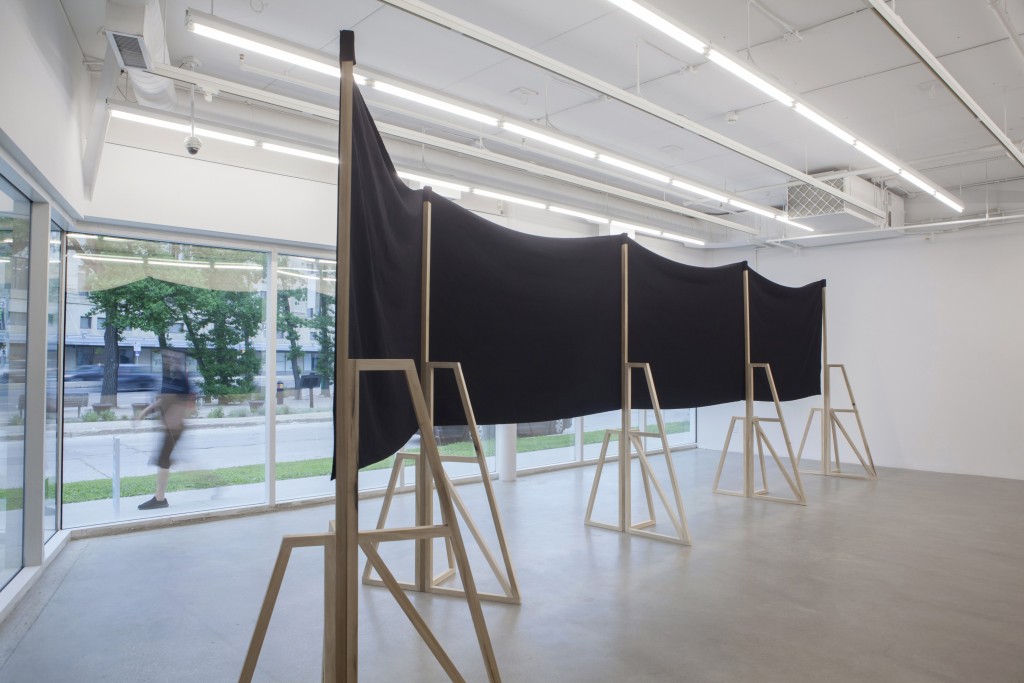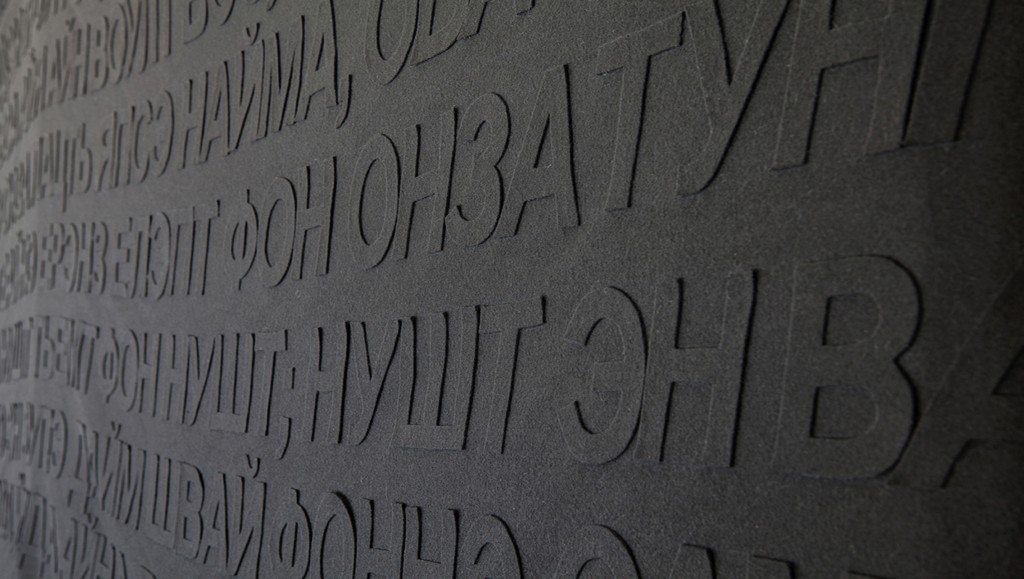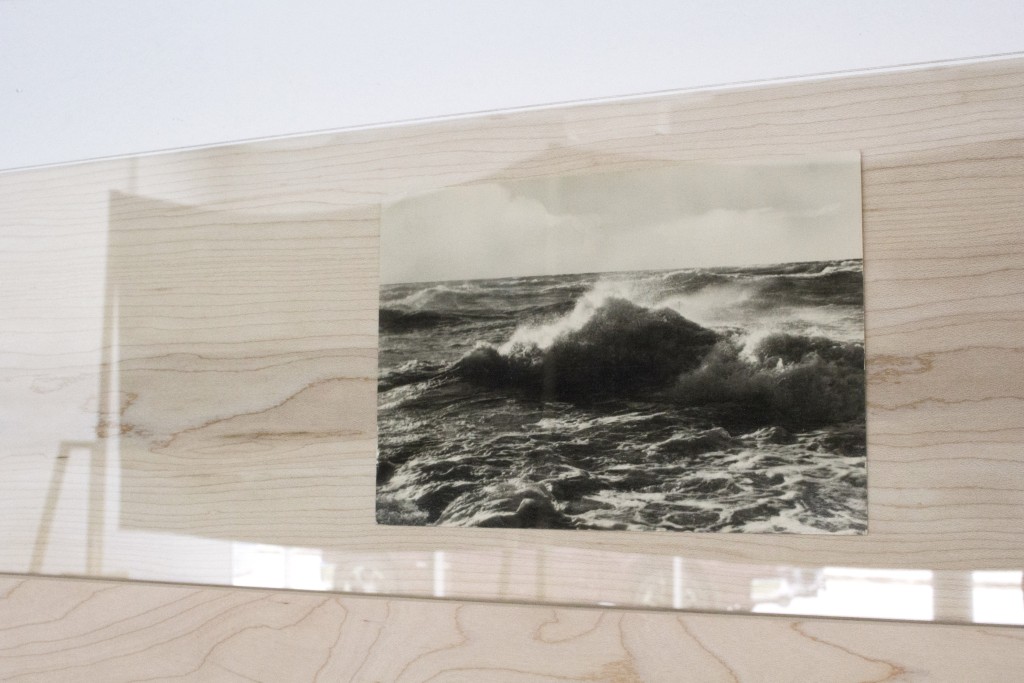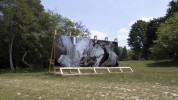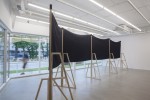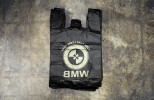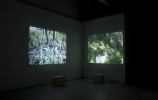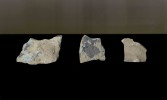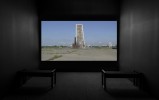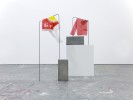The Cedar, The Birch, Our Hands At Full-Mast, Behind The After
wool, wood, thread, hardware, 245 x 915 x 152 cm; installation view from the solo exhibition The Cedar, The Birch, Our Hands At Full-Mast, Behind The After, June 10 - August 22, 2020, Plug In ICA, curated by Nasrin Himada, Winnipeg, Treaty 1 territory, CA
EN
Written in the oral Ukrainian Mennonite language and transliterated into the Cyrillic alphabet, the banner’s elusive text forces its legibility to a small audience: those Soviet Mennonites who became refugees, exiles, displaced, and disappeared, a banner for an impossible gathering. Speaking from an eschatological future-present tense, the text cites sources from a five hundred year span: from Anabaptist tracts during the Radical Reformation, to Ukrainian anarchist calls for no borders in the post-1917 revolutionary era, collaged into a poetic call to arms. The banner ends in a repeated question - HOW’S THE BREATHING? - crossfading into Ukrainan unofficial artist Sergei Anufriev’s 1989 painting of the same name. Difficult to translate, it could also read WHAT KIND OF BREATH?, asserting repetitive translation and transliteration as a form of re-publication: making something public, again.
The banner is the central work in the exhibition, accompanied by the ongoing work Our hands meet the sun at the edge of things, which draws on Soviet Mennonite narratives and diaspora as points of departure for expansive assemblage and collage
DE
Geschrieben in der mündlichen ukrainischen Mennonitensprache und in das kyrillische Alphabet übersetzt, zwingt der schwer lesbare Text des Banners seine Lesbarkeit einem kleinen Publikum auf: jenen sowjetischen Mennoniten, die zu Flüchtlingen, Exilanten, Vertriebenen und Verschwundenen wurden, ein Banner für eine unmögliche Versammlung. Der Text, der aus einer eschatologischen Zukunft im Präsens spricht, zitiert Quellen aus einer Zeitspanne von fünfhundert Jahren: von täuferischen Traktaten während der radikalen Reformation bis hin zu ukrainischen anarchistischen Aufrufen für Grenzenlosigkeit in der revolutionären Ära nach 1917, die zu einem poetischen Aufruf zu den Waffen zusammengefügt werden. Das Transparent endet mit der wiederholten Frage - WIE IST DIE ATMUNG? - die in das gleichnamige Gemälde des ukrainischen inoffiziellen Künstlers Sergei Anufriev von 1989 übergeht. Schwierig zu übersetzen, könnte es auch WHAT KIND OF BREATH? heißen, was die wiederholte Übersetzung und Transliteration als eine Form der Wiederveröffentlichung bestätigt: etwas wieder öffentlich zu machen.
Das Banner ist das zentrale Werk in der Ausstellung, begleitet von der laufenden Arbeit Our hands meet the sun at the edge of things, die sich auf sowjetische mennonitische Erzählungen und Diaspora als Ausgangspunkte für ausgedehnte Assemblagen und Collagen bezieht.
